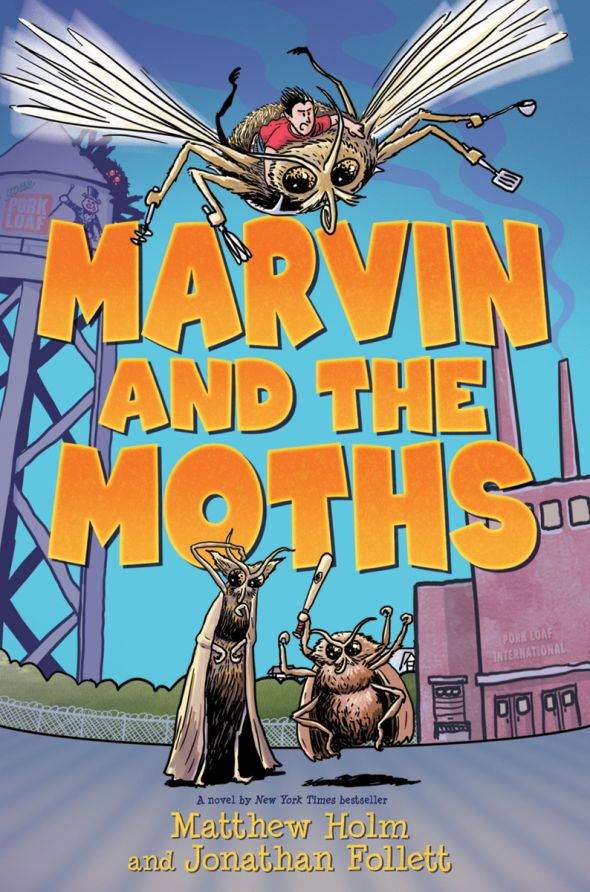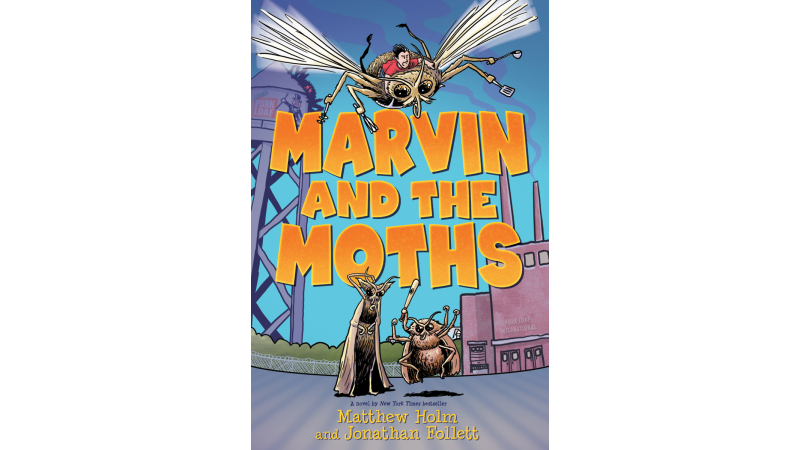 Author Matthew Holm stopped by OOM to tell us about the process of writing his newest book Marvin and the Moths with co-author Jonathan Follett.
Author Matthew Holm stopped by OOM to tell us about the process of writing his newest book Marvin and the Moths with co-author Jonathan Follett.
Writing is often thought of as a solitary pursuit. We have that classic image in our minds of the lonely author, sitting by herself at a writing desk, staring at a blank page (or nowadays, a blank screen). But many books have more than one author. In fact, all of the books I’ve written have been collaborations, including my graphic novels—Sunny Side Up and the Babymouse and Squish series—as well as my latest prose novel from Scholastic, Marvin and the Moths. And for me, writing graphic novels and writing prose are very different collaborative experiences.
I work on my graphic novels with my sister, Jennifer Holm. We developed a process for creating graphic novels that, after 30-plus books, we have down to a science. Jenni will first write the manuscript, then send it to me. I’ll go through it and revise and rewrite as necessary, and then begin making pencil thumbnail sketches of each moment in the story. I’ll send these rough sketches to Jenni, who cuts and pastes them to create the layout for our comics, deciding where each image should go, how many panels we should have on a page, and so on. Then I’ll clean up the layouts and re-draw everything to create my final inks.
Did you notice anything about that process? One key part is that it’s asynchronous: We never work on the books together at the same time. We each do our task then send it to the other to complete the next step. Jenni is never looking over my shoulder as I sketch, and I’m never watching as she types each word.
In contrast, writing Marvin and the Moths with Jonathan Follett (my best friend since middle school) was a continuous, synchronous project. We started writing together in person, on weekends when I would travel from New York to Massachusetts and the two of us would sit in front of one computer and type the story, sentence by sentence. Later, when I moved to the west coast, we continued our live writing sessions thanks to Google Docs. Many people know Google Docs as a means of sharing files online. But what they may not realize is that, since the computer servers constantly update the documents, two people can open the same document, type and make changes, and see those changes appear almost instantly—whether on opposite sides of the country, or the globe. (We worked this way even while I was living in China for three months last year.) We just call each other on the phone, open the manuscript, and start typing.
And it helps to remember that, despite that classic image of the lonely author, every book is a collaboration—between author and illustrator, editor, sales team, librarian, and, ultimately, reader. That’s something I’ve kept in mind whenever I’m starting a new project: I know I won’t have to go it alone.



